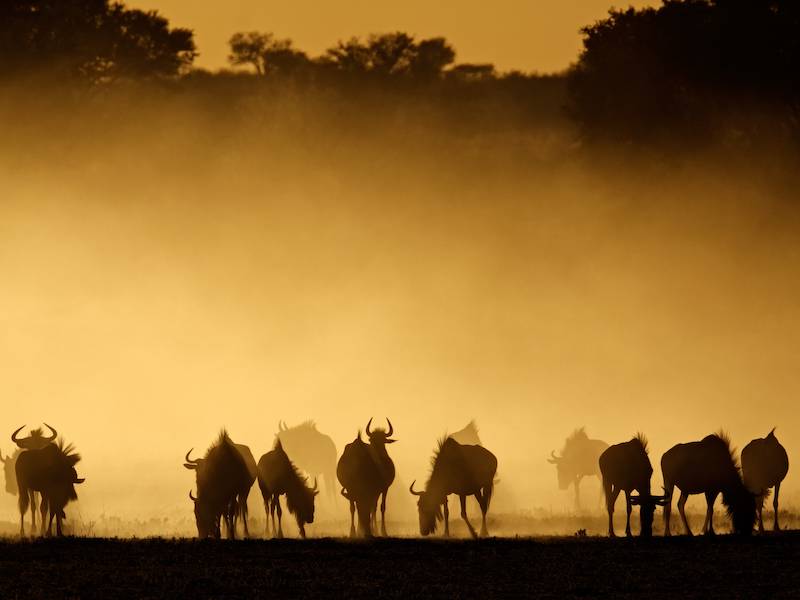Five reasons why Africa will dominate the MICE industry in 2019

Demand for meetings and events is forecast to rise between five and 10 per cent in 2019, with the average size of meetings also expected to increase, and Africa is ready to capitalise.
Working for its slice of the growing global Meetings Incentive Conferences and Exhibitions (MICE) pie, Africa has positioned itself as an attractive destination for corporates and international event planners.
Henk Graaff, Managing Director of SW Africa, shares five reasons why he believes Africa could be hugely successful in the MICE-sector in 2019:
1. Increased flight access opens new possibilities
Flight access to and connectivity on the African continent has improved drastically in 2018. Ethiopia Airways added new services to Chicago and Los Angeles, while, recently, Kenya Airways launched a direct flight to New York. Also, Rwandair has ambitious plans to launch another new service to the Big Apple soon.
These new connections have opened up new destination choices for MICE organisers. Victoria Falls, the Masai Mara and Africa's Mountain Gorillas, have all become more accessible to international MICE travellers as a result of improved flight connections, says Graaff.
Intra-African airline connectivity has also increased, approximately five per cent year-on-year, in 2018 with the establishment of 70 new routes and 30 more intra-continental routes in the pipeline.
2. New African destinations expand MICE offerings
Rwanda has been hard at work to position itself as a MICE destination of choice. Clare Akamanzi, Rwanda Development Board Chief Executive Officer, who said Rwanda aimed to increase its MICE receipts to US$74-million in 2018 alone, up from US$42-million in 2017, highlighted the benefit of private sector support.
“As you know, Rwanda has prioritised MICE as one of the drivers of economic growth, and the Government has invested in infrastructures like the Kigali Convention Centre and the national airline. We have also invested in hotels and attracted the private sector to support the value chain of conference tourism,” Akamanzi highlighted.
Uganda has also indicated it is keen to explore the MICE market further. According to Graaff, both Rwanda and Uganda offer unique products and services for MICE travellers and buyers, with the possibility to experience a trip to the Mountain Gorillas a favourite programme highlight.
Says Graaff: “One of the greatest advantages of opting for Rwanda is that the condition of the roads is very good, the travel distances are relatively small and the infrastructure is great. This means gorilla trekking has become more accessible to MICE travellers, who want to visit the gorillas after their meetings are done and dusted.”
Meanwhile, Uganda offers gorilla permits that are much more affordable. The country also provides a more extensive range of accommodation, ranging from mid-budget to luxury. Uganda also has a fantastic chimp-trekking programme in Kibale, as well as a few authentic visitor experiences with the indigenous Batwa people.
3. South Africa still tops the MICE wish-list
South Africa has been rated the number one meetings destination in Africa by the International Congress and Convention Association (ICCA). The country also ranked 34th in the world as a MICE destination.
Speaking at IBTM World 2018 (Institute of Business Travel Management) in Barcelona, Amanda Kotze-Nhlapo, Chief Convention Bureau Officer for the South African National Bureau, said meetings, conferences and conventions had attracted one-million international delegates to South Africa annually. She added that there are around 211,000 national, regional and international meetings, conventions, and conferences hosted in South Africa each year.
South Africa will continue to be a destination of choice for MICE organisers, says Graaff, who highlighted the favourable exchange rate as a major incentive, and organisers with larger budgets can add a lot more bells and whistles to their events in South Africa, he said.
4. Hyper-personalisation and unusual venues are the norm in Africa
There has been an increasing trend for hyper-personalisation, with MICE organisers looking to tailor and adapt any event, conference or meeting to the client needs and company values. They seek unique outdoor spaces and out-of-the-box venue ideas to make the experience more memorable.
Africa offers a vast array of exceptional locations, from a meeting on the Blue Train to a convention at the new Zeitz Museum in Cape Town. SW Africa has previously hosted meetings out in the middle of the wilderness, as part of a mobile safari camp.
Says Graaff: “We have definitely experienced a need for more personalised and non-traditional MICE experiences, and I guess you can say that we can count ourselves lucky that Southern and Eastern Africa as our operating environment never fails to present us with opportunities to exceed expectations.”
5. Exciting Corporate Social Responsibility Projects
Sustainability and corporate social responsibility will continue to be another primary focus in 2019. The war on single-use plastic has been a hot topic this year and is set to remain a significant trend.
Africa offers a host of opportunities for delegates who want to give back. In a private concession in the Kruger National Park, for example, delegates can embark upon a conservation safari with the Elephant Collaring Project. They can lend a hand by fitting specific elephants with GPS-enabled satellite collars that help identify habitual crop raiders and assist in combating human-wildlife conflict.
A MICE delegate will love the value adds of sleep-outs under the stars, surprise morning bush breakfasts, sophisticated safari dining and tailor-made menus with catering services.










